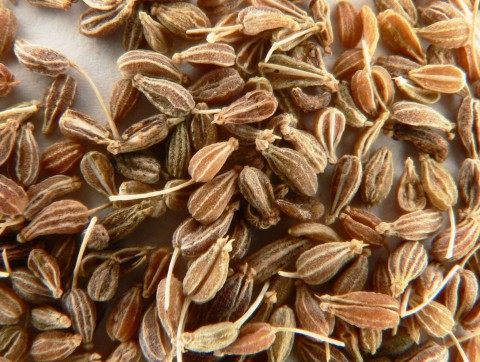Anise
Anise /ˈænɪs/, Pimpinella anisum, also called aniseed, is a flowering plant in the family Apiaceae native to the eastern Mediterranean region and Southwest Asia. Its flavor has similarities with some other spices, such as star anise, fennel and liquorice.
Cultivation
Anise plants grow best in light, fertile, well drained soil. The seeds should be planted as soon as the ground warms up in spring. Because the plants have a taproot, they do not transplant well after being established, so they should be started either in their final location or transplanted while the seedlings are still small.[3]
Production
Western cuisines have long used anise to flavor some dishes, drinks, and candies, and the word is used for both the species of herb and its licorice-like flavor. The most powerful flavor component of the essential oil of anise, anethole, is found in both anise and an unrelated spice called star anise (Illicium verum) widely used in South Asian, Southeast Asian, and East Asian dishes. Star anise is considerably less expensive to produce, and has gradually displaced Pimpinella anisum in Western markets. While formerly produced in larger quantities, by 1999 world production of the essential oil of anise was only 8 tonnes, compared to 400 tonnes from star anise.
Medicinal
- Anise, like fennel, contains anethole, a phytoestrogen.
- Anise has been used to treat menstrual cramps.
- The main use of anise in European herbal medicine was for its carminative effect, as noted by John Gerard in his “Great Herball,” an early encyclopedia of herbal medicine.
- The essential oil has reportedly been used as an insecticide against head-lice and mites.
- Anise seed infusion made by pouring 1 cup of boiling water over 1 tablespoon anise seed and sweeten with honey has been used to treat smoker’s cough.
http://en.wikipedia.org/wiki/Anise
Foto:
https://commons.wikimedia.org/wiki/File:Apiaceae_Pimpinella_anisum.jpg
https://commons.wikimedia.org/wiki/File:Aniseed_p1160018.jpg


